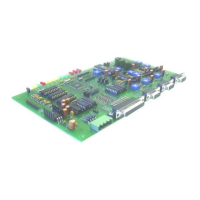8
Sub-Audible Tone Decoder
In addition to the COS signal, the controller can optionally use a signal derived from an external CTCSS (continuous tone
controlled squelch switch) decoder on each port. If this option is used, the controller can be commanded to require users to use
sub-audible tone with their transmissions on that port. The RC210 accomodates either a logic high (5 to 15 vdc) or a logic low (<
.8 v) when a valid tone is detected. This is set using the jumper settings, as shown in Table 2.
Push-To-Talk
The controller provides a solid-state switch closure to ground, capable of sinking 500 ma from a positive source at a voltage of
up to 100 vdc. This should accommodate just about any radio on the market.
Receiver Audio And De-Emphasis
Audio from the receivers needs to be supplied to the controller and is controlled by a crosspoint switch matrix under
microprocessor control. Each receiver's audio is routed to the appropriate transmitter(s) as needed.
The audio circuitry in the controller allows for a variety of signal levels and impedances. It is capacitively coupled, which means
that a dc level may be present on the signal provided. The level is internally adjustable, so a fairly wide range of levels is
acceptable, but for best results the level should be between .5 and 2.5 volts peak-to-peak. This should accommodate just about
any receiver.
The input impedance is high (>10K) , so that audio may be picked off anywhere inside the receiver without loading problems.
Supplied audio does not need to be de-emphasized nor gated, as the controller takes care of this for you. If you choose a point
inside the receiver that is already de-emphasized, you can remove the jumper to disable the controller's de-emphasis circuitry.
In this case the controller's audio input stage will provide flat audio. Table 3 shows how to configure these jumpers
Table 3
JUMPER PORT # DE-EMPHASIS FLAT
JP7 1 ON OFF
JP8 2 ON OFF
JP9 3 ON OFF
Transmitter Audio
Audio is supplied from the controller to the various transmitters. This audio consists of receiver, speech and tone audio,
switched and mixed under control of the CPU in the controller.
The audio is high level and medium impedance, so it's easy to find a good place to inject it into the transmitter. The high level
minimizes hum and noise pickup and may be knocked down at the transmitter if necessary. However the level is internally
adjustable and this option should rarely be necessary. The output is capacitively coupled, so you connect it without concern of
dc voltage at the point of connection to the transmitter.

